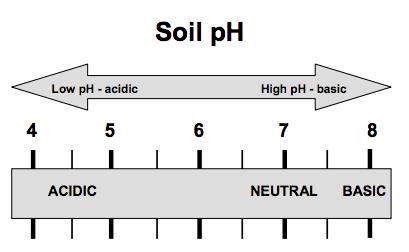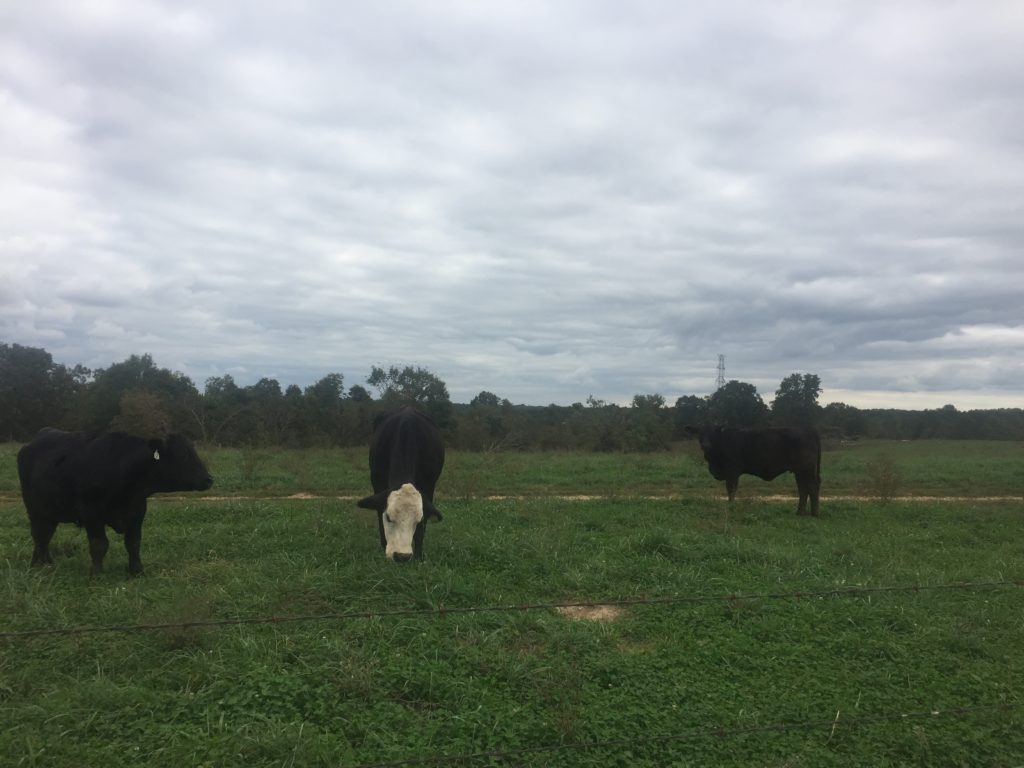If you happened to drive by our Wildwood farm several weeks ago you may have seen a big truck driving up and down our field in a very methodical way with a cloud of white dust behind him.
What was he doing? He was “liming” our field.
What is lime?
The lime we put on our fields is made from all-natural, crushed limestone. It is a fine white powder that we spread on the ground and it dissolves into the soil when it rains. Limestone naturally has a high amount of calcium, and we add it to the soil to help lower the acidity of the soil.
Why would you put limestone (lime) on your fields?
Without getting too deep into science talk, think back to your high school chemistry class. You may remember learning about the pH scale. Soil pH tells you soil acidity, and nearly all Missouri soil is acidic.
This is important because you need healthy (close-to-neutral) soil in order to grow a healthy crop. Soils that are too acidic limit the nutrients and stunt the roots of whatever is grown in that soil. This is true for all soil – not just farmland. In fact, you may have applied lime to your front yard (so your lawn would be greener) or your garden (so your vegetables would take root better).

Image courtesy of NC State Extension Office (https://content.ces.ncsu.edu/soil-acidity-and-liming-basic-information-for-farmers-and-gardeners)
How does soil become acidic? Does it happen on its own?
Over time, soil becomes acidic on its own due to things like plants or manure decomposing on the soil or acidic rain.
Why would a cattle farmer need to put lime on a field? You only have grass in your field, not a crop.
It may look like “only grass” to you, but it’s critical to us. Good beef starts with good grass. We want our soil to be as nutrient rich as possible so that when grass grows on it, it’s full of nutrients that our cattle need.
How does liming a field help the cows?
Our cows eat grass and we want that grass to be as nutritionally balanced as possible. If we didn’t add lime to our fields occasionally, there would be very little (if any) calcium left in our grass. This would have a negative impact on our cattle in the long run since cattle, like humans, need calcium for strong bones.
How do you know if your fields need lime?
We send soil sample to designated laboratories with soil scientists. They test the soil and give us a report with the composition of the soil in each of our fields. Their report identifies how much calcium, magnesium, phosphorous, sulfur and potassium are in our soil. Then, they develop a plan for nutrient management of the soil and provide recommendations on how to treat our soil in order to reduce the soil’s acidity so that it’s ideal for growing grass our cows love to eat.
Where do you get the all-natural limestone?
This time we were able to purchase our lime from a local quarry that’s near Wildwood. However, all lime has a slightly different compositional make-up – some lime has more calcium and other lime has more magnesium. That’s another reason why it’s important for us to do soil tests – it helps us know where to purchase our lime from so that we’re getting the right type of lime for our soil.
How often do you lime your fields?
We rely on scientific soil tests to tell us when we need to lime our fields, but on average, it’s every three years.
Is liming safe for the environment? Is it safe for the cattle?
Yes. The USDA and local Soil and Water Conservation Districts strongly recommend that farmers lime their fields in order to protect and preserve the land for future generations.
Have a question? Let us know!


